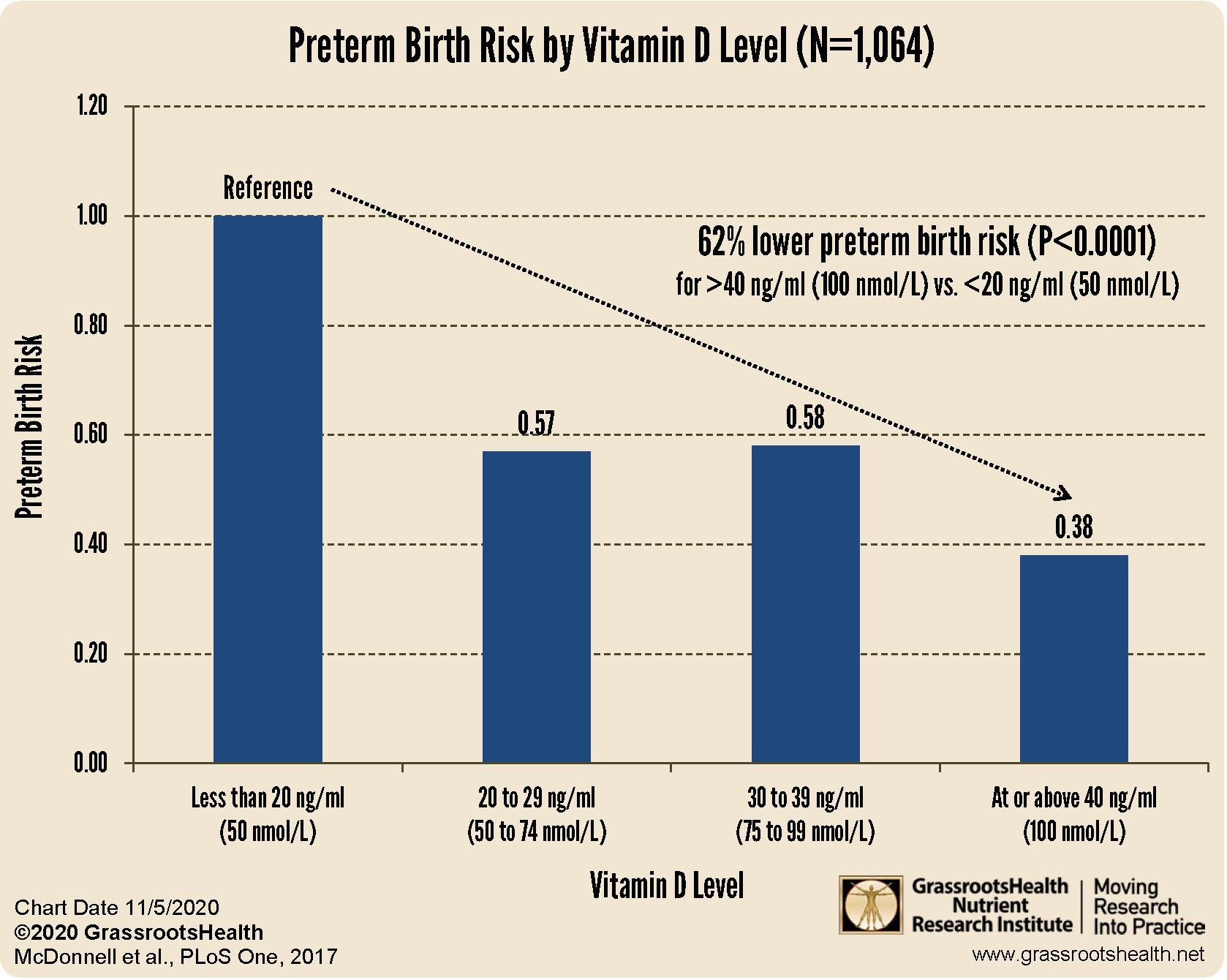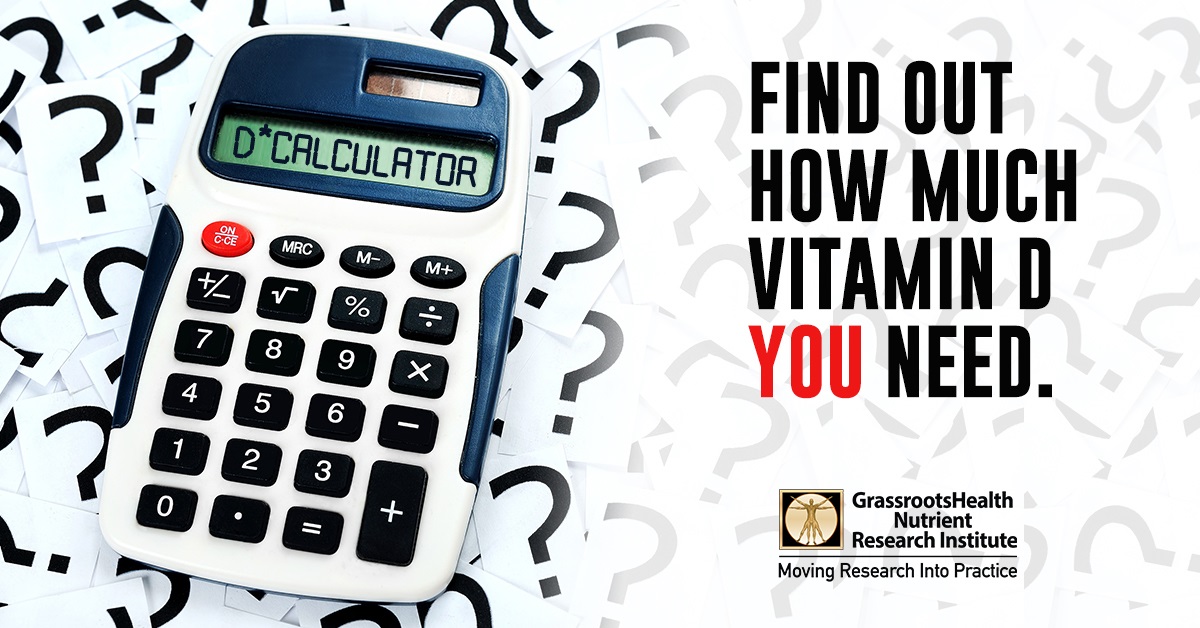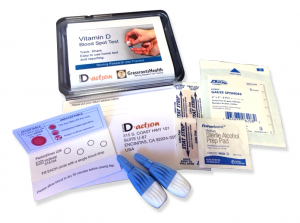Published on November 10, 2020
Results from a GrassrootsHealth published study assessing the relationship between vitamin D level and preterm birth risk
 Preterm birth is when a baby is born earlier than 37 weeks gestation. According to the World Health Organization, there are an estimated 15 million babies born prematurely worldwide every year and more than 1 million babies die from complications of preterm birth. In the United States, about 12% of babies are born prematurely.
Preterm birth is when a baby is born earlier than 37 weeks gestation. According to the World Health Organization, there are an estimated 15 million babies born prematurely worldwide every year and more than 1 million babies die from complications of preterm birth. In the United States, about 12% of babies are born prematurely.
As part of Prematurity Awareness Month this November, we want to bring attention to evidence that shows vitamin D status could reduce the risk of preterm birth. In 2017, GrassrootsHealth published a study that assessed the relationship between vitamin D level and preterm birth risk. This analysis included pregnant patients aged 18-45 years at the Medical University of South Carolina (MUSC).
The researchers found that women with vitamin D levels at or above 40 ng/ml (100 nmol/L) had a 62% lower risk of preterm birth compared to women with levels less than 20 ng/ml (50 nmol/L) (p<0.0001). This lower risk remained after adjusting for socioeconomic variables.
Do you know your vitamin D level? Take action now to reach your target vitamin D level; start by finding out where your level is at today.
Do you know YOUR vitamin D level?
Could a vitamin D deficiency be putting a damper on your health? Do you know your levels of other immune-important nutrients as well?
Using the GrassrootsHealth Custom Kit Builder, you can create a test kit that measures your vitamin D level and other important nutrients (such as omega-3s and magnesium), as well as your CRP level. Click here to build and order your test kit today – measure your status and take the steps necessary to improve them if needed; make an impact on your health today and for your future! When you know what your levels are, you can determine next steps to take and how much supplementation may be needed if you are not at your target levels.
What Does it Take YOU to Get Your D to 40 ng/ml (100 nmol/L)?
Did you know your health could be greatly affected by making sure you have a vitamin D level of at least 40 ng/ml (100 nmol/L)? Help us help you.
STEP 1 – Do you know what your vitamin D level is? If not, be sure to test today to find out.
STEP 2 – Determine your target level. Are you at your target level? Experts recommend a level of at least 40-60 ng/ml (100-150 nmol/L).
STEP 3 – Need to boost your level? Use the D*calculator to see how much vitamin D it may take to reach your target. Opt for the Loading Dose for a quicker boost.
STEP 4 – Optimize how your body absorbs and utilizes vitamin D with co-nutrients and these simple steps.
STEP 5 – Re-Test! This is an important step to make sure you have reached your target level, and to ensure you are not taking too much! Re-testing after 3-4 months is recommended.
STEP 6 – Adjust, Repeat…
Give your immune system the nutrients it needs to support a healthy you and protect yourself from unnecessary diseases, especially COVID-19.
Through GrassrootsHealth Nutrient Research Institute, you can also test your essential elements magnesium, copper, zinc and selenium, toxins such as lead, mercury and cadmium, as well as your omega-3 levels, inflammation levels and thyroid stimulating hormone (TSH) level. Find out your levels today! Log on to the test selection page (click the link below) to get your tests and see for yourself if your levels can be improved.
Make sure you track your results before and after, about every 6 months!
How can I track my nutrient intake and levels over time?
To help you track your supplement use and nutrient levels, GrassrootsHealth has created the Personal Health Nutrient Decision System called
For each specific supplement, you can track what days you take it, how much, and many other details. This will help you know your true supplemental intake and what patterns of use work for you to reach and maintain optimum nutrient levels. Check it out today!









